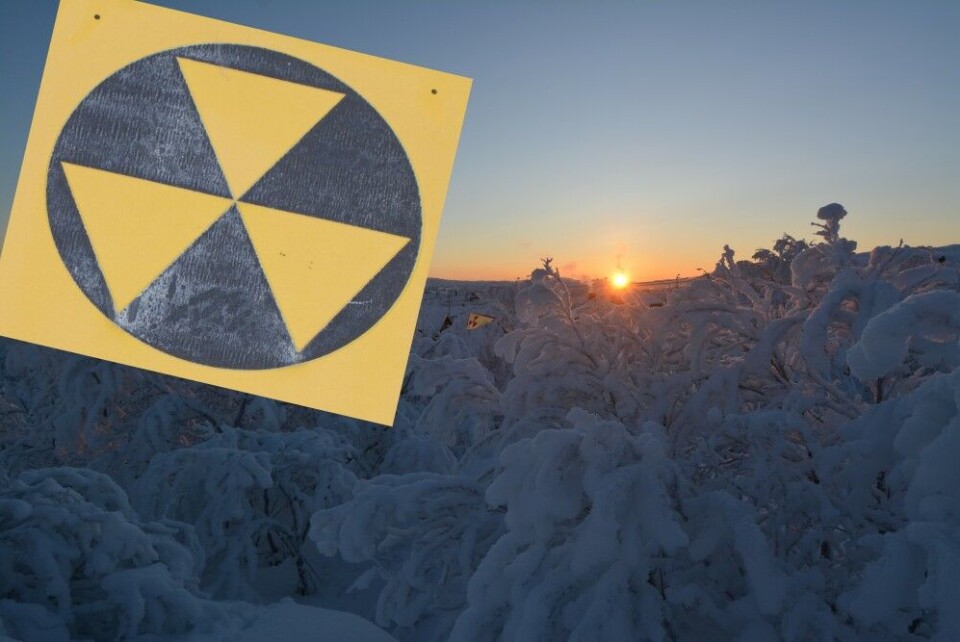
Traces of radioactive iodine is in the air
Skibotn, Svanhovd and Kajaani are three of the locations in northern Europe where the radioactive isotope of unknown origin are measured.
p.p1 {margin: 0.0px 0.0px 0.0px 0.0px; font: 11.0px ‘Helvetica Neue’; color: #000000; -webkit-text-stroke: #000000}p.p2 {margin: 0.0px 0.0px 0.0px 0.0px; font: 11.0px ‘Helvetica Neue’; color: #000000; -webkit-text-stroke: #000000; min-height: 12.0px}span.s1 {font-kerning: none}
Finland’s Radiation and Nuclear Safety Authority (STUK) says tiny amounts of radioactive iodine-131 were measured in the air Kotka, east of Helsinki in late January. The same isotope was then measured again last week north to Kajaani.
The levels were very low, ranging from 0,7 to 1,6 micro-becquerel per cubic meter air, STUK says in a news release. From where the radioactivity is coming is still unknown. Radioactive iodine-131 has a half-life of only eight days so the measurements are proof of a rather recent release. The source could be a nuclear reactor, a facility producing isotopes for medical purposes or by releases from a nuclear weapons related test.
Norway’s Radiation Protection Authority (NRPA) on Monday confirms detection of radioactive iodine also at several of the country’s air-measurement stations.
Bredo Møller at NRPA’s Emergency Preparedness Unit at Svanhovd, near Norway’s border to Russia in the north, says to the Barents Observer that the levels detected are «very small concentrations of radioactive iodine.» He says the the levels at the Norwegian stations were between 0,2 to 0,5 micro-becquerel per cubic meter.
The iodine were detected in the second week of January at Ørland [northwest of Trondheim], then in Skibotn in Troms the week after. Last week of January, the isotope was measured outside Oslo, while the two air-filters at Svanhovd and Viksjøfjell on Norway’s border to Russia in the north detected the radioactivity last week, between February 5 to 12. According to STUK, the radioactivity was also found in air-filters in Estonia.
The levels measured raise no health concerns.
Bredo Møller says no traces of the isotope are measured at Svalbard, where Norway operates a station as part of the global network by the Comprehensive Nuclear-Test-Ban Treaty Organization (CTBTO).
Last week, NRPA installed equipment for measuring radioactivity on board on of the vessels operated by the Norwegian Coastal Administration, the tug «FAR SABRE». Møller says the equipment can’t detect iodine or other specific radionuclides online.
p.p1 {margin: 0.0px 0.0px 0.0px 0.0px; font: 11.0px ‘Helvetica Neue’; color: #000000; -webkit-text-stroke: #000000}span.s1 {font-kerning: none}
Also last winter, radioactive iodine were found in air-filters at several places in Europe. Like now, the source of the releases was unknown. In northern Europe, countries like Sweden, Finland and Russia operates nuclear power plants, while nuclear powered surface vessels are sailing in Arctic waters. Most countries in Europe produce different kinds of radionuclides for medical purposes.
















